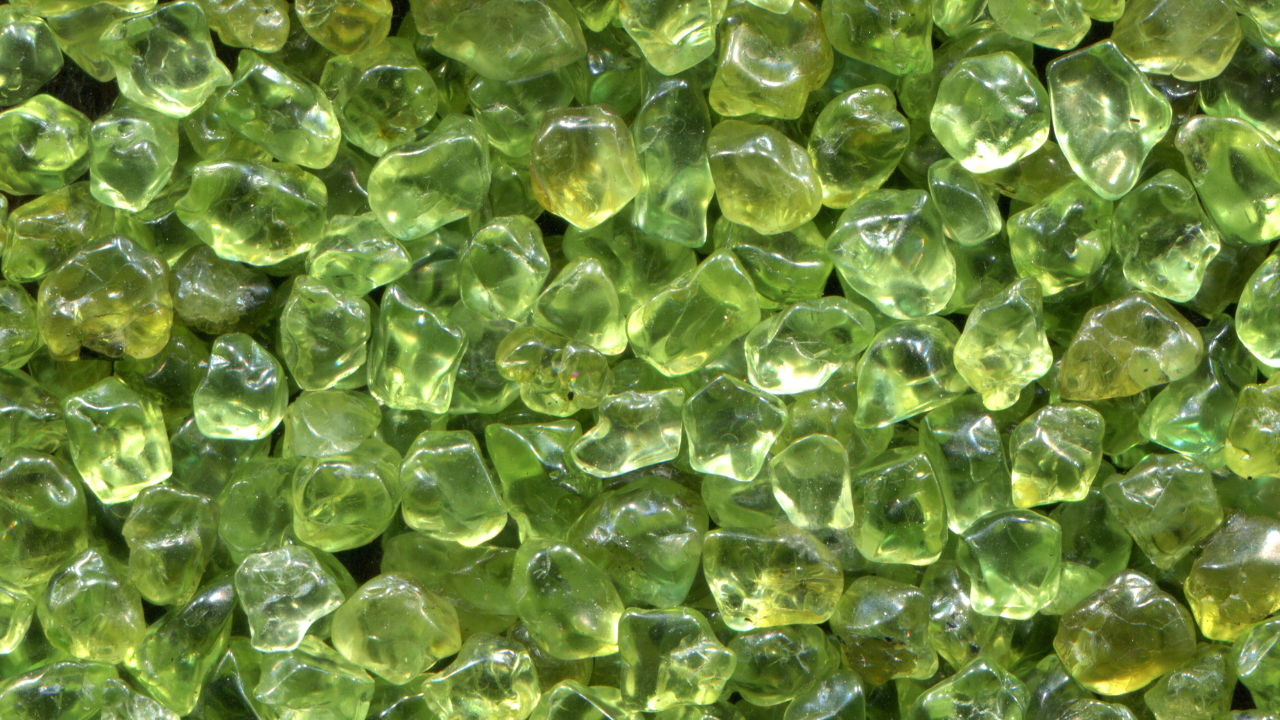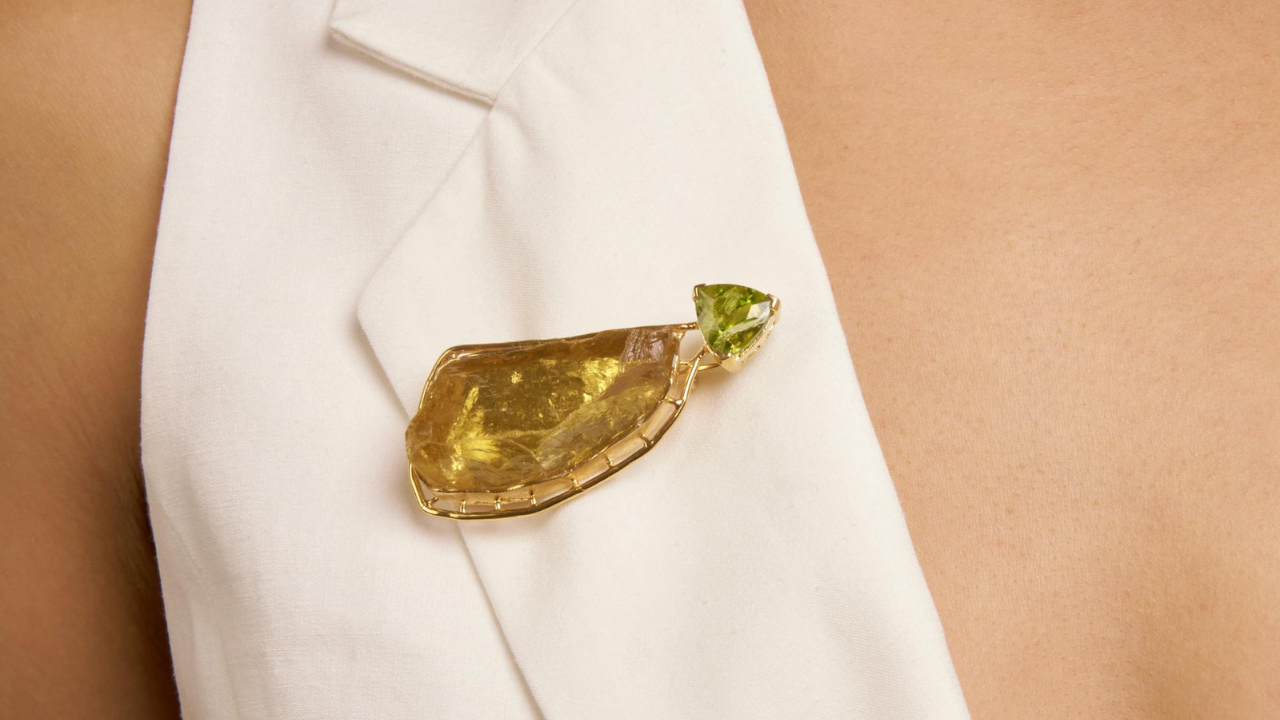Peridot, the vibrant green birthstone of August, has captured hearts for thousands of years with its olive-green glow. Often called the “gem of the sun,” this beautiful gemstone offers more than just stunning jewelry—it carries rich meaning, healing properties, and a fascinating history. Whether you’re an August baby yourself or shopping for someone special, this guide explores everything you need to know about peridot, from its unique colors to its connections with zodiac signs and chakras.
What is Peridot?
Peridot is a gem-quality variety of the mineral olivine. Unlike many gemstones that come in various colors, peridot appears exclusively in shades of green—from yellowish-green to deep olive and occasionally with hints of brown. This beautiful peridot color comes from the iron in its chemical makeup, giving it a distinctive glow that ancient Egyptians called “the gem of the sun.”

What makes peridot special among gemstones is that it’s one of the few gems formed not in the Earth’s crust but in the mantle, brought to the surface through volcanic activity. Even more fascinating, some peridot crystals have been found in meteorites that traveled from space to Earth!
Peridot: The August Birthstone
While August actually has three birthstones—peridot, sardonyx, and spinel—peridot remains the most popular and widely recognized. As the primary August birthstone, peridot makes wonderful gifts for those born in this summer month. Its refreshing green hues perfectly capture the essence of late summer’s lush landscapes.
The spinel birthstone, added to August’s lineup more recently, offers a striking contrast to peridot with its range of colors, including vivid reds, deep oranges, and vibrant pinks. This variety gives August babies more options when selecting birthstone jewels that match their personal style.
August babies fall under either Leo (July 23-August 22) or Virgo (August 23-September 22) zodiac signs. Leo personalities, known for their warmth and confidence, connect with peridot’s sunny energy. For practical and analytical Virgos, the stone’s stability and harmony-promoting qualities resonate deeply.
The History and Meaning of Peridot
Peridot has a rich history dating back thousands of years. Ancient Egyptians mined it from an island in the Red Sea known today as St. John’s Island (or Zabargad). They called it the “gem of the sun” and believed it protected against evil spirits, especially when set in gold.
Throughout history, priests and religious leaders have incorporated peridot into ceremonial jewelry and seals. Its bright green color symbolized life and renewal, making it valuable for spiritual rituals. Medieval churches often adorned their treasuries with peridot jewels, believing they held special protective powers.
The gemstone’s name has an interesting origin story. Some believe it comes from the Arabic word “faridat,” meaning gem. Others trace it to the Greek word “topazios,” which was actually used to describe the island where peridot was first mined—causing some historical confusion with topaz gemstones.
Throughout history, peridot has been associated with:
- Good luck and prosperity
- Protection from nightmares
- Harmony in relationships
- Strength and courage
- Peace and patience
In many traditions, peridot was thought to ward off evil spirits, especially when worn as jewelry. Its green color symbolized renewal, growth, and abundance—qualities still associated with the stone today.
Peridot’s Unique Color Properties
While peridot is exclusively green, its specific hues can vary significantly. The stone ranges from yellowish-green to deep olive green, with the most valuable specimens displaying a rich, pure green color without brownish undertones.
Though not traditionally associated with orange tones, some peridot gems can display a yellowish-green color that, in certain lights, gives off a warm, almost orange-tinged glow. This color versatility adds to peridot’s charm and allows it to complement various metals and companion stones in jewelry designs.
What distinguishes peridot from other green gemstones like emeralds is its special quality of looking good in any light. While emeralds often appear darker in dim lighting, peridot maintains its bright glow even in the evening—earning it the nickname “evening emerald” in some cultures.
Where Peridot Is Found
Peridot forms in several locations around the world, each producing stones with slightly different characteristics:
- The San Carlos Apache Reservation in Arizona produces much of the world’s commercial peridot
- Myanmar (formerly Burma) is known for exceptionally high-quality peridot crystals
- Pakistan’s Himalayan mountains yield some of the largest and clearest specimens
- Tanzania has emerged as an important source of fine peridot, with mines in the Arusha region producing stones with exceptional clarity
- The Hawaiian islands produce smaller peridots formed from volcanic activity
- Ancient deposits in Egypt’s Red Sea region are historically significant
- Other sources include China, Vietnam, Sri Lanka, and meteorites
Peridot Jewelry and Care
Peridot ranks between 6.5-7 on the Mohs hardness scale, making it durable enough for everyday wear but requiring some care to maintain its beauty. This makes it suitable for various jewelry pieces:
- Rings (though protective settings are recommended)
- Earrings
- Necklaces and pendants
- Bracelets
- Brooches and pins
When working with peridot in jewelry design, jewelers often consider the stone’s natural internal features. Some peridot crystals display interesting layered structures that can add character to the finished jewels. These natural layers form during the crystal’s growth and can create fascinating light effects when properly cut.

Peridot and Other Birthstones
Each month has its own birthstone, creating a colorful calendar of gems throughout the year:
- January: Garnet (deep red)
- February: Amethyst (purple)
- March: Aquamarine (light blue)
- April: Diamond (clear)
- May: Emerald (green)
- June: Pearl, alexandrite, or moonstone
- July: Ruby (red)
- August: Peridot (green), sardonyx (reddish brown with white banding), or spinel (various colors, often vibrant pink or red)
- September: Sapphire (blue)
- October: Opal or tourmaline
- November: Topaz or citrine
- December: Turquoise, tanzanite, or zircon
August is unique for having three official birthstones. While peridot is the most recognized, sardonyx (a type of onyx with reddish-brown and white banding) and red spinel (sometimes confused with ruby) are also considered August birthstones.
Red gems like spinel provide a striking alternative for August babies who prefer warmer colors over peridot’s green. These red jewels have their own rich history, with red spinel often being mistaken for ruby in historical crown jewels of various nations.
Peridot in Color Psychology and Healing
In color psychology, green represents growth, renewal, harmony, and balance—all qualities associated with peridot. The stone’s particular shade of green is said to:
- Reduce stress and irritability
- Inspire positive thoughts
- Balance emotions
- Connect the wearer with nature
- Promote confidence and purpose
For those interested in crystal healing and chakra work, peridot is associated with the heart chakra, which governs love, compassion, and emotional balance. Some practitioners also connect it with the solar plexus chakra, linking to personal power and confidence.
Many crystal enthusiasts believe peridot can:
- Attract wealth and prosperity
- Promote healthy relationships
- Enhance spiritual growth
- Cleanse negative energies
- Boost confidence and self-esteem
While orange gemstones typically connect with creativity and joy, peridot’s occasionally yellowish-green tones can bridge the gap between green and orange energies. This middle ground helps balance the emotional warmth of orange with the stability of green, creating a harmonious energy field for the wearer.
Conclusion
Peridot, with its sunny green glow, offers more than just beauty—it carries meaning, history, and positive energy. For August-born individuals, it represents their birth month with a gemstone as unique as they are. Whether worn as jewelry, kept as a collector’s item, or used in spiritual practices, peridot continues to captivate people with its distinctive color and radiant charm.
From ancient Egyptian mines to Tanzanian deposits, Hawaiian volcanoes, and even outer space, this remarkable gemstone reminds us that beauty exists in unexpected places. As the gem of the sun, peridot brings a touch of summer’s vibrant energy wherever it goes—making it the perfect celebration of August birthdays and the warmth and passion they represent.